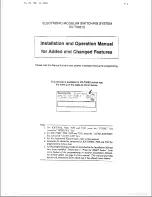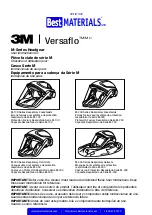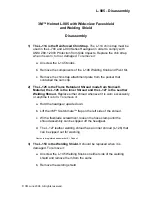
5
A-D. Bike on a stand.
F1
R1
E. Bike on the ground.
F2
R2
F. Bike with rider on.
F3
R3
Settings
Basic settings
Always ensure that the basic setting made by
Öhlins is correct. It is adapted to the make and
model (in its original state) and for a rider of aver-
age weight.
Everything must harmonize
In the recommendation table there are Öhlins front
fork springs that are specifically adapted to the
shock absorbers recommended to your motor-
cycle. If none is noted in the table then “intact”
original springs is the right choice. Incorrect
spring action can give a fork angle that is too
steep or too flat.This in turn will give a tendency
for oversteering or understeering, which could
seriously affect the handling characteristics of the
motorcycle.
Setting the spring preload
Measuring:
Preload on the spring/springs is very important,
because it affects the height of the motorcycle
and the fork angle. Consequently, handling char-
acteristics can be changed, even negatively.
Proceed as follows (it will be much easier if done
by two persons):
A
Place the motorcycle on a stand.
B
Lift up the rear end to a fully extended
position.
C
Measure the distance, eg, from the
lower edge of the rear mud guard or
from a point marked by a piece of
tape, immediately above the rear wheel
axle, to the wheel axle. (R1)
D
Make a similar measurement on the front
axle, e.g., from the bottom of the upper
fork crown to the front wheel axle.
The fork must also be fully extended. (F1)
E
Allow the motorcycle (without rider) to
apply load on the springs and repeat
the measuring procedure. (R2, F2)
F
Then take the same measurements
with the rider and equipment on the
motorcycle. It is important that the
rider has a correct riding posture,
so that the weight is balanced on the
front and rear wheel in the same way
as when riding. (R3, F3)
The measurements may not differ from the
following sizes:
Without rider:
Rear:
5-10 mm
(R1-R2)
Front:
25-30 mm
(F1-F2)
With rider:
Rear:
30-40 mm
(R1-R3)
Front:
35-48 mm
(F1-F3)






























